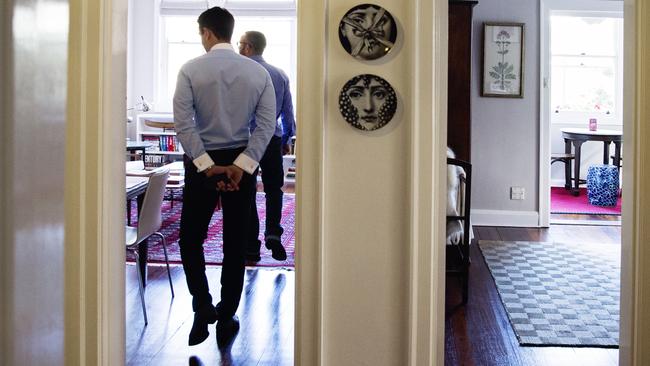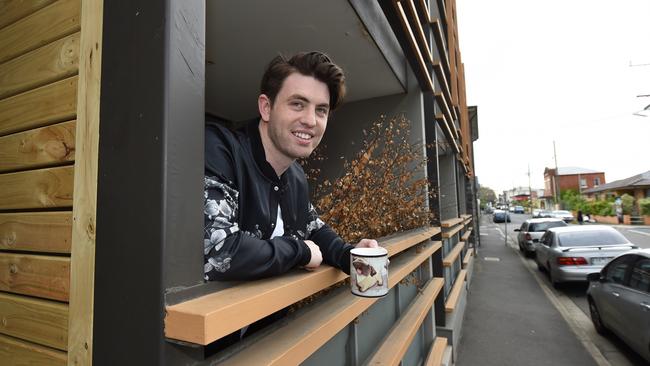The big thing first homebuyers still need to crack the market, despite tumbling house prices
House prices have tumbled and investors have fled, but young Aussies hoping to buy for the first time still require this one big thing.

Generations
Don't miss out on the headlines from Generations. Followed categories will be added to My News.
House prices in many parts of Australia have tumbled over the past 18 months, with significant reductions taking a bit of pressure off first homebuyers.
But getting a foot on the ladder remains extremely difficult, as banks tighten their lending criteria, and half of young would-be buyers still need help from the bank of mum and dad.
Analysis by mortgage comparison website RateCity found the number of first-timers requiring financial assistance from their parents rose 16 per cent compared to two years.
“Our research found that this year, 50 per cent of millennials turned to mum and dad to help them get their foot on the property ladder,” RateCity research director Sally Tindall told news.com.au.
“By comparison, when Gen X first homebuyers bought in 1998, 27 per cent needed to get help from their parents, so it’s quite a jump.”
Despite significantly higher interest rates and lower average wagers, less than one per cent of Baby Boomers who bought their first place in 1978 did so with assistance from mum and dad.

“These days, getting a cash gift to help with a deposit is very popular while others ask mum and dad to go guarantor,” Ms Tindall said.
Parents who go guarantor on a child’s mortgage put forward the equity in their own home as security, she explained.
But that help comes with significant risks for the bank of mum and dad.
“Going guarantor is not to be taken lightly. While it can help a homebuyer get their application over the line, it does mean that parents are liable for the loan if the buyer defaults,” she said.
“In the worst case scenario, parents could be forced to sell their home if their child gets in trouble and can’t make the mortgage repayments.”

Home ownership rates have declined across the country, most notably among young people and those on modest incomes.
The latest Housing, Income and Labour Dynamics in Australia Survey found the number of people who own their own home fell from 72 per cent in 2011 to 66 per cent in 2016.
Falling prices over the past few years have seen a modest increase in first homebuyer activity in many cities, but banks are being more scrupulous in mortgage approvals.
“Banks are asking for greater proof of people’s ability to pay their loans,” Ms Tindall said.
“The Royal Commission revealed example after example of poor lending practices, were people were given mortgages they couldn’t afford.
“I think it’s a good thing. It’s important to make sure we aren’t getting ourselves into debt we can’t handle.”
While she said interest rates are likely to remain relatively low in the short to medium-term, many lenders are preparing for future increases.
In some cases, banks are modelling a mortgage applicant’s ability to service a loan with an interest rate of seven or eight per cent, Ms Tindall said.

Skyrocketing property values over the past several years, particularly in Sydney and Melbourne, widened the gap between rich and poor.
Ilan Wiesel, a senior lecturer in urban geography at the University of Melbourne, said the impact of the housing boom had been “polarising”.
On one hand, affluent households increased their wealth while increased housing costs undermined income growth for less prosperous Australians, he said.
“An increased supply of affordable rental housing is crucial to reduce the gap in after-housing disposable income,” Mr Wiesel said. “Low-income private renters also need greater security of tenure, including more stringent controls on rent increases.”
He said a national affordable housing plan is needed to help people get by for starters, but also to give hope to younger generations of would-be buyers who are currently locked out of the market.
“A renewed focus on affordable home purchase schemes for people on moderate incomes can help reduce the wealth gap. In addition, housing tax levers, used well, can help reduce both wealth and income inequalities over time.”

Analysis by the Grattan Institute found a significant annual supply of new dwellings would keep house prices lower.
Building an extra 50,000 homes a year for the next decade could leave values between five and 20 per cent lower than they otherwise would have been, it found.
The key to boosting stock is in embracing high-density development, the institute said.
State governments should introduce small redevelopment housing codes to protect existing residents in suburbs by addressing height, overshadowing and privacy, while improving the quality of new dwellings.
Taller developments of four to eight-storeys should be allowed by default on transport corridors and around train stations, the Grattan Institute said.
And each local council should be set a housing target, linked to plans for the growth of cities as a whole. Those who fail to meet targets should be supervised by independent planning panels.
Originally published as The big thing first homebuyers still need to crack the market, despite tumbling house prices



